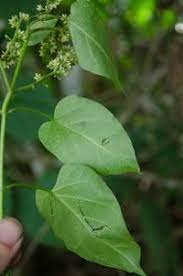NAME: Gynura amplexicaulis
COMMON NAMES: Okinawan Spinach, Chinese Longevity Spinach
LOCAL NAMES: Sitta,nti
MORPHOLOGICAL DESCRIPTION: Gynura amplexicaulis, commonly known as Okinawan Spinach or Chinese Longevity Spinach, is a leafy green vegetable with distinct leaves and potential health benefits. The leaves are large, oblong, and have wavy edges. The plant can grow as a low-lying ground cover or as a climbing vine.
USEFUL PART(s): The leaves of Gynura amplexicaulis are the primary useful part of the plant.
GENERAL USES:
Edible Greens: The leaves of Okinawan Spinach are consumed as a leafy vegetable in various culinary dishes. They are valued for their nutritional content and unique taste, which is often described as slightly peppery and spinach-like.
Potential Health Benefits: Gynura amplexicaulis is sometimes considered a functional food due to its potential health-promoting properties. It is believed to have antioxidant and anti-inflammatory effects.
GEOGRAPHIC DISTRIBUTION: Gynura amplexicaulis is native to Southeast Asia and is commonly grown in countries like China, Thailand, and Indonesia.
WHY IS IT GREEN? Gynura amplexicaulis is considered "green" due to its nutritional value, potential health benefits, and its role in promoting sustainable and diverse diets.
ENVIRONMENTAL IMPACT:
Home Gardening: Okinawan Spinach can be easily grown in home gardens, contributing to local food production and reducing the environmental impact associated with transporting and packaging vegetables.
Biodiversity: Incorporating diverse leafy greens like Gynura amplexicaulis into diets encourages the cultivation of a wider range of plant species and supports biodiversity.
FUN FACT: The name "Chinese Longevity Spinach" reflects its historical use in traditional Chinese cuisine and its reputation as a nutritious and health-promoting vegetable.
FURTHER READING: To explore more about Gynura amplexicaulis, its culinary uses, its potential health benefits, and its role in promoting sustainable diets, you can refer to resources on ethnobotany, nutritional literature, and studies on traditional and functional foods.





















